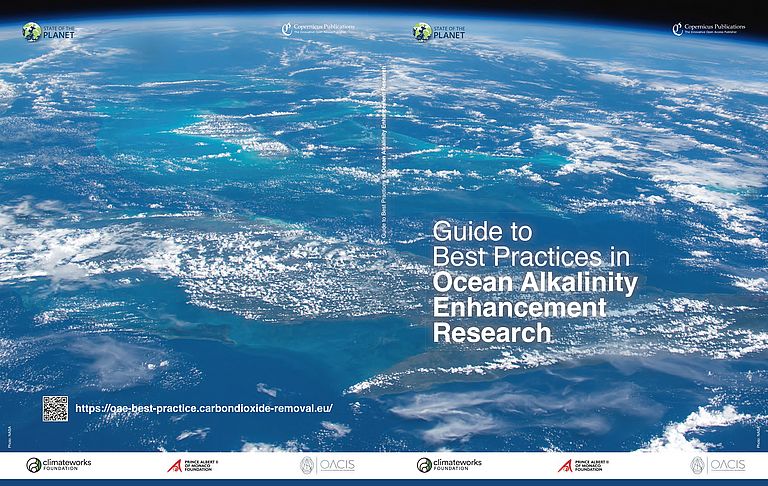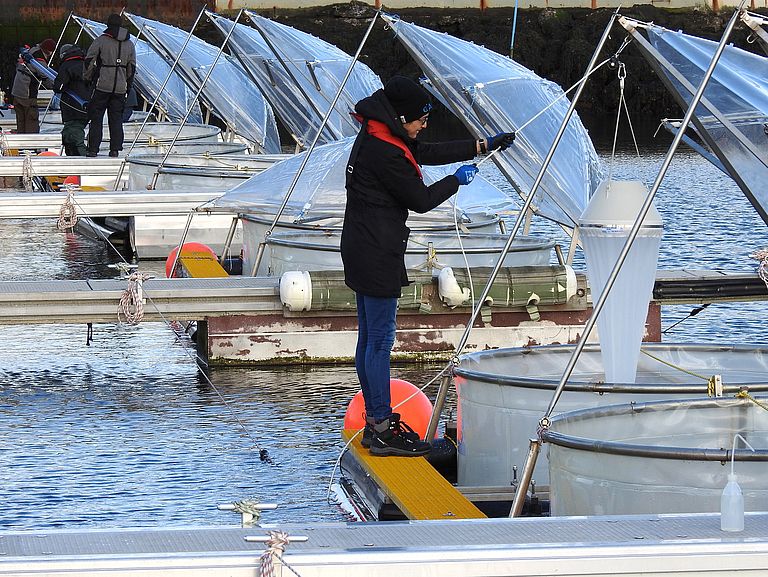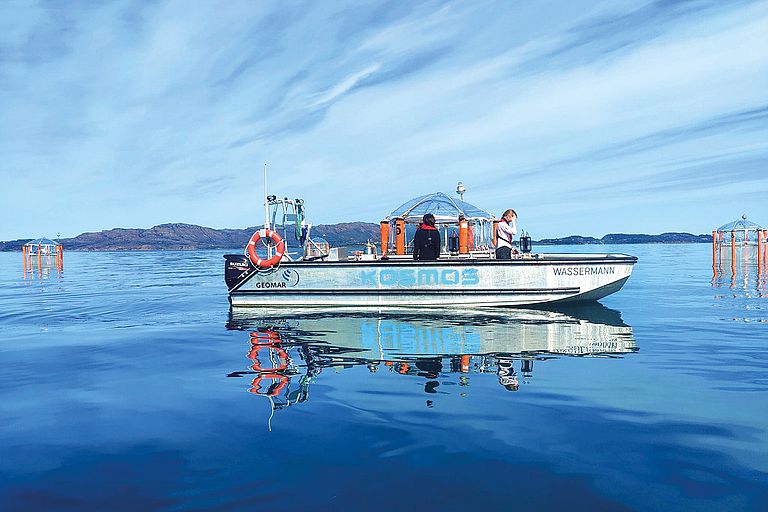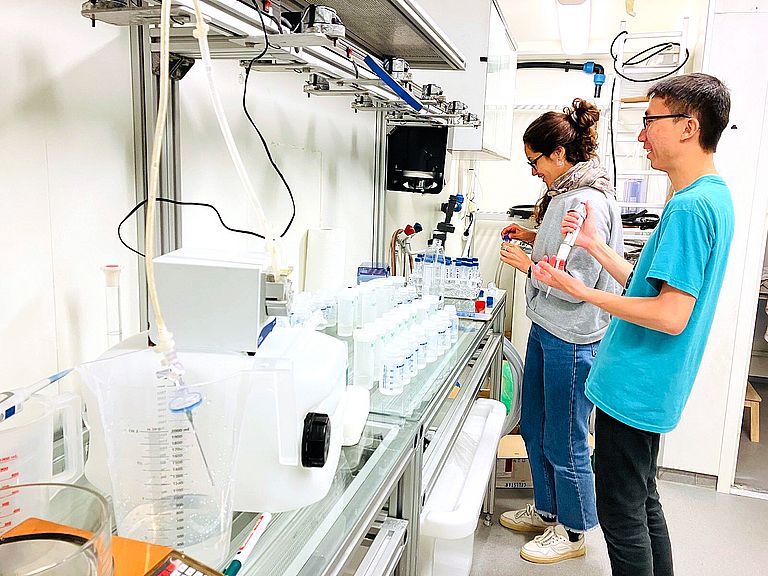Anna Niewerth
Phone: +49 (0) 431 600 2812
E-Mail: aniewerth(at)geomar.de
Speeding up knowledge generation in a transparent and responsible way
Best Practices Guide to Ocean Alkalinity Enhancement Research published in State of the Planet and launched at United Nations Climate Change Conference
In addition to drastic reductions of greenhouse gas emissions, a substantial amount of carbon dioxide (CO2) needs to be removed from the atmosphere to limit global warming to well below 2° Celsius and pursue efforts to limit such warming to 1.5° Celsius as decided by countries from around the world in 2015 in the Paris Agreement. According to the Intergovernmental Panel on Climate Change (IPCC), between 100 and 1000 billion tonnes of CO₂ must be removed in the 21st century.
Several methods of carbon dioxide removal (CDR) are currently being assessed and discussed, ranging from nature-based to technological approaches. One approach is ocean alkalinity enhancement (OAE). OAE mimics and accelerates the natural process of rock weathering, adding minerals such as silicate or lime to seawater to increase its alkalinity and enhance its capacity for carbon dioxide uptake.
Responding to the rapidly increasing research and the emergence of start-ups, an international team of researchers developed a Best Practices Guide to Ocean Alkalinity Enhancement Research in a bottom-up community approach. The guide is published in the open-access peer-reviewed scientific journal State of the Planet and will be launched at the United Nations Climate Change Conference (COP28) in Dubai on 2 December 2023.
In this guide, the authors compare and synthesise previously published methods and offer guidance for future research. The guide sheds light on strengths and weaknesses of different approaches, scientific uncertainties, biological and ecological impacts, knowledge gaps and research needs. Best practices are formulated for experimental set-up of laboratory, pelagic and benthic mesocosm and field experiments, as well as for modelling scenarios and monitoring, reporting and verification. In addition, data management, legal aspects and public engagement are addressed.
“The goal of this guide is to speed up knowledge generation and sharing while continuing to ensure transparency and responsibility in our research,” said Professor Dr. Andreas Oschlies, Earth system modeller at GEOMAR Helmholtz Centre for Ocean Research Kiel and co-chair of the research mission Marine Carbon Sinks in Decarbonisation Pathways (CDRmare) of the German Marine Research Alliance. “This will also inform the public debate and facilitate the development of effective governance, monitoring and risk management.”
“The development of the guide was inspired by a similar bottom-up approach used to develop a Best Practices guide to ocean acidification research back in 2010,” said Professor Dr. Jean-Pierre Gattuso, biogeochemist at the Laboratoire d'Océanographie de Villefranche, French National Centre for Scientific Research (Centre National de la Recherche Scientifique, CNRS) and Chair of the Ocean acidification and other ocean changes – impacts and solutions (OACIS) initiative of the Prince Albert II of Monaco Foundation. “That guide had an enormous catalytic effect in growing the field of ocean acidification research by lowering the barrier to entry and making comparison of different studies and the generation of synthesis products more straightforward. We hope the new guide on ocean alkalinity enhancement research will have a similar impact to advance comparable and inclusive research for OAE and ocean CDR at large.”
“We know the oceans are a powerful climate ally, but as the climate warms, oceans are absorbing more and more acid-causing carbon dioxide. The acid dissolves protective alkaline shells around oysters, crabs and other animals vital to ocean health and to people who depend on oceans for their livelihoods. Ocean alkalinity enhancement can give the ocean an antacid and combat climate change, yet too little is known about this approach. This OAE guide helps to better illuminate the challenges and opportunities associated with this promising approach,” said Dr. Jan Mazurek, senior director of Carbon Dioxide Removal at ClimateWorks Foundation.
Original publication:
Oschlies, A., Stevenson, A., Bach, L. T., Fennel, K., Rickaby, R., Satterfield, T., Webb, R., and Gattuso, J.-P. (Eds.): Guide to Best Practices in Ocean Alkalinity Enhancement Research. Copernicus Publications, State of the Planet, https://sp.copernicus.org/articles/2-oae2023/
Funding information:
The guide was funded by ClimateWorks Foundation and the Prince Albert II of Monaco Foundation.

Cover “Best Practices Guide to Ocean Alkalinity Enhancement research”

In an experiment on the island of Helgoland, researchers are investigating the risks and side effects of ocean alkalinisation as part of the RETAKE joint project of the CDRmare research mission. Photo Ulf Riebesell, GEOMAR

In closed mesocosms, experiments can be carried out under realistic conditions, here as part of the European OceanNETs project. Photo: Lukas Krause, GEOMAR

Analysing water samples in the laboratory during a mesocosm experiment in the Norwegian Raunefjord. Photo: Giulia Faucher, GEOMAR


